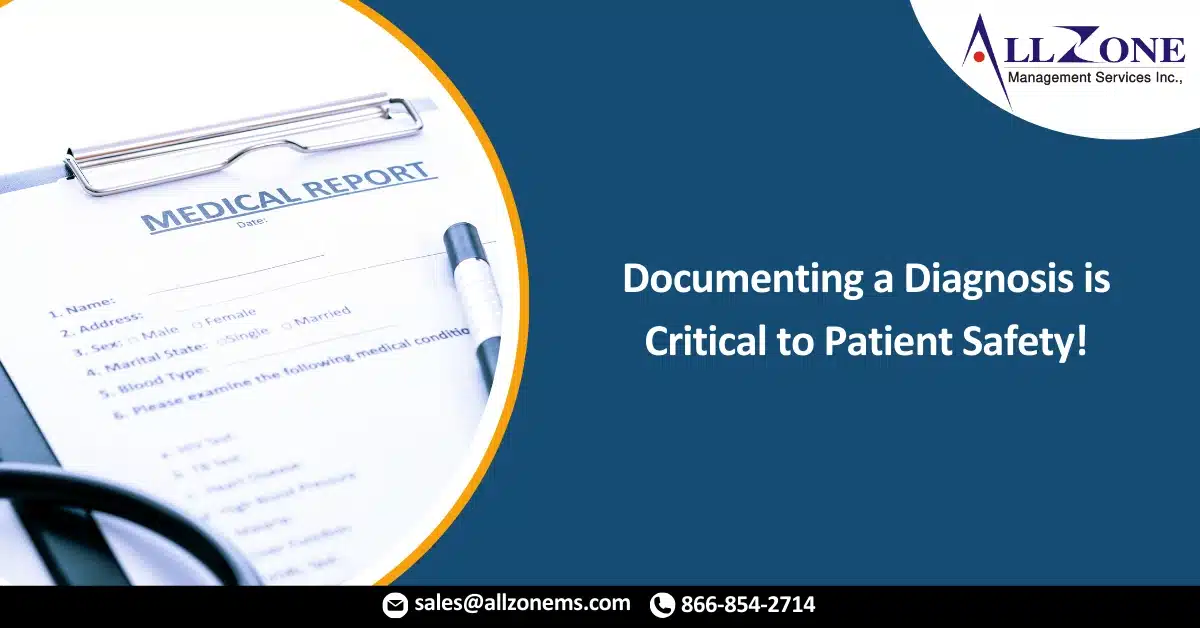Documenting a diagnosis in the health record extends beyond its impact on reimbursement and quality-of-care measures. It is also critical to patient safety.
One of the more challenging aspects of the work as CDI professionals is physician engagement, which is why connecting the work to the patient level is so important. Many providers don’t want to hear about how their documentation impacts hospital reimbursement and it difficult to demonstrate a direct impact between their documentation and quality performance measures except when a patient dies, which is a sensitive subject.
The importance of documenting a diagnosis in the health record extends beyond its impact on reimbursement and quality-of-care measures. It is also critical to patient safety. AHRQ states, “The diagnosis explains a patient’s health problem, informs every subsequent healthcare decision, and is developed through the iterative process of information gathering, information integration, and information interpretation.” Good patient outcomes require the right diagnosis.
According to AHRQ, diagnostic errors are an emerging safety concern that can “involve up to 12 million patients annually in U.S. ambulatory settings alone and contribute to death for up to 80,000 patients in U.S. hospitals annually.” It involves missed opportunities related to various aspects of the diagnostic process that includes “recognition of key signs, symptoms, and test results.” Diagnostic errors contribute to diagnostic safety events, which may or may not result in patient harm. These are defined by AHRQ as the following:
Delayed, Wrong or Missed Diagnosis:
There were one or more missed opportunities to pursue or identify an accurate and timely diagnosis (or other explanation) of the patient’s health problems based on the information that existed at the time.
Diagnosis Not Communicated to Patient:
An accurate diagnosis (or other explanation) of the patient’s health problems was available, but it was not communicated to the patient (includes patient’s representative or family as applicable).”
Although there are many factors that contribute to diagnostic errors, the primary objective is to identify a patient’s illness quickly and accurately, a goal shared by CDI professionals. One of the primary contributors to diagnostic errors is the current state of diagnosis education. “Diagnosis begins with obtaining an appropriate history from the patient and performing a hypothesis-driven physical examination, but evidence suggests that even these most basic elements are often deficient. Diagnosis then depends on clinical reasoning to apply the clinician’s depth of knowledge in an effort to make sense of the patient findings in the appropriate context.
Clinical reasoning is challenging and represents the dominant issue in diagnostic error, as repeated studies have shown.” Many medical schools do not explicitly address clinical reasoning through curriculum dedicated to this topic. However, medical schools are not alone in this deficit; AHRQ found it also extends to nursing, pharmacy, and other fields.
CDI professionals can be part of the solution as organizations develop processes to reduce diagnostic errors. The work of CDI already includes reviewing health records for diagnoses that explain abnormal diagnostic indicators. Often CDI professionals are reluctant to query a provider immediately when documentation gaps are identified, instead preferring to give the provider the opportunity to interpret the results and arrive at a conclusion before querying, which could delay the query process and subsequent documentation of an associated diagnosis by days, but is that the best strategy?
Not all diagnosis will carry the same weight, but it is clear from the AHRQ research that CDI professionals should be more proactive in supporting patient safety related to diagnostic errors by bringing documentation gaps to the healthcare team sooner than later.
CDI professionals needed all along to engage providers because accurately documenting diagnoses is a patient safety issue.
For More Information: cdi documenting diagnoses and patient safety

